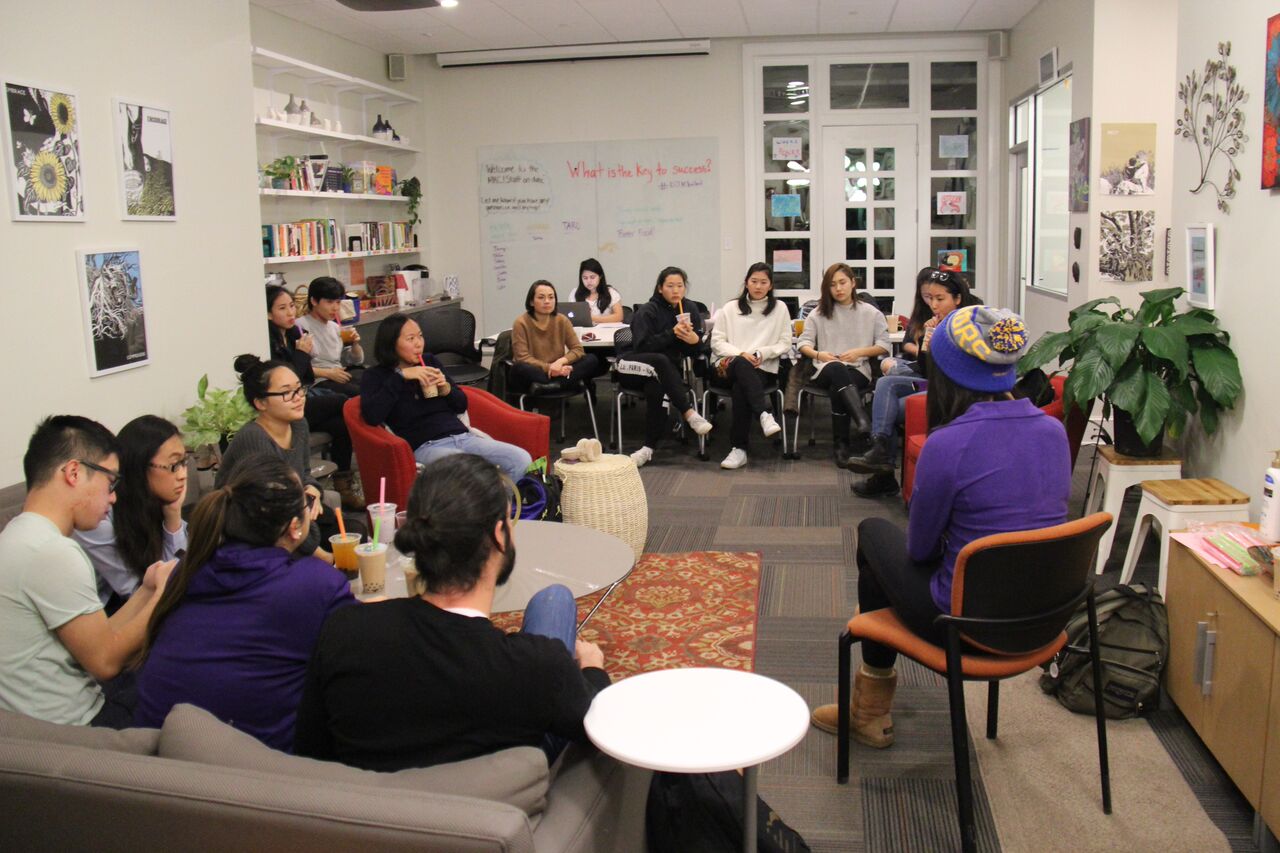

A newly reestablished group, the Asian Students Association, has seen a surge in membership in the weeks following November’s Frost sit-in. This fall a group of students has revitalized the organization, which they say aims to foster solidarity among Asian students of different national backgrounds.
A similar group had existed at the college until 2012, when it was disbanded due to a decline in interest. In the spring of 2014, Rachel Nghe ’16, now the organization’s president, and several other students consulted with Mariana Cruz, the director of the Multicultural Resource Center at the time, about restarting an organization for all Asian students.
“On the Amherst College campus, I want ASA to be a voice for students that people will actually listen to,” Nghe said.
Weekly in-depth planning began in 2015 as the group prepared to revive the organization. They registered the Asian Students Association with the Association of Amherst Students and first became active at the beginning of this semester. Since the organization was reintroduced to campus, American studies professor Franklin Odo has become its faculty adviser.
Student leaders said that although the group went through a long planning process, it did not have a concrete structure until after the Amherst Uprising movement and Frost sit-in.
“Amherst Uprising was a moment of realization for a lot of Asian people,” said Jenna Peng ’18, the association’s project manager for political engagement. She cited conversations focused on race and the involvement of Asian students in the movement as the reason behind the increase in membership. “It really brought a lot of people into realizing their Asian identity for the first time. And because of that, there was this enormous sense of community that came out of it.”
According to Peng, the association had a small turnout at the beginning of the semester. “We had a meeting the Saturday of Uprising, and so many new faces turned up,” Peng said. “The community has definitely grown.”
Nghe said the association has distinct goals from those of other Asian-affiliated groups, such as the Korean Students Association, Chinese Student Association and the International Students Association. According to Nghe, the Asian Students Association focuses more on the identity and portrayal of Asians and Asian-Americans politically, on campus and in the world.
“At the beginning, we wanted to shy away from being cultural and advertise ASA as being purely political,” Nghe said. “Now, after the whole Amherst Uprising, it kind of shifted, because now, all of the other groups are involved in ASA, in one way or another … But, at the same time, we also want to maintain that we’re political. We’re talking about the Asian experience.”
Members of the association are also trying to form a social foundation through community building and political engagement. Nghe described community building as encouraging underclassmen and other students to start thinking and articulating their thoughts about Asian identity, and political engagement as ensuring that Asian students are heard by the administration and other cultural affinity groups.
Students involved in the Asian Students Association have begun laying out plans for future projects. They intend to partner with an Asian student group at Mount Holyoke College, as well as others in the Five College consortium, to recreate a Five College pan-Asian organization, which existed years ago but fell apart as Asian student organizations slowly dissolved.
They also want to bring more Asian and Pacific American courses and more Asian-American faculty members, especially in the humanities, to Amherst College.
“Currently, we only have one full time faculty member and one visiting faculty member on a two year appointment teaching Asian American content — and this is a huge subject, including people of East Asian, South Asian, Southeast Asian and Pacific Islander heritage,” Kiko Aebi ’16, one of the students working on this project, said. “Right now I am working with a group of students to put pressure on the administration to fill this gap in our curriculum and also to hire more faculty of specifically Asian American heritage.”
Peng said that many Asian-American students come from STEM-focused backgrounds, and that having Asian-American faculty in the humanities was important as well to give students “role models in non-STEM fields.”
In planning to recreate an Asian student group on campus, Nghe drew inspiration from documents and plans from Amherst’s old Asian Students Association. She also drew ideas from similar organizations at other schools, including Cornell, which Cruz had recommended as a model for creating such a group. But Nghe said she was not able to rely too much on other schools as a source of inspiration, because Amherst was unlike most schools she had looked at in terms of its size and student body.
In the future, Nghe hopes that other students will sustain the Asian Students Association and keep it running.
“Because there isn’t going to be another Amherst Uprising to bring students together,” she said.